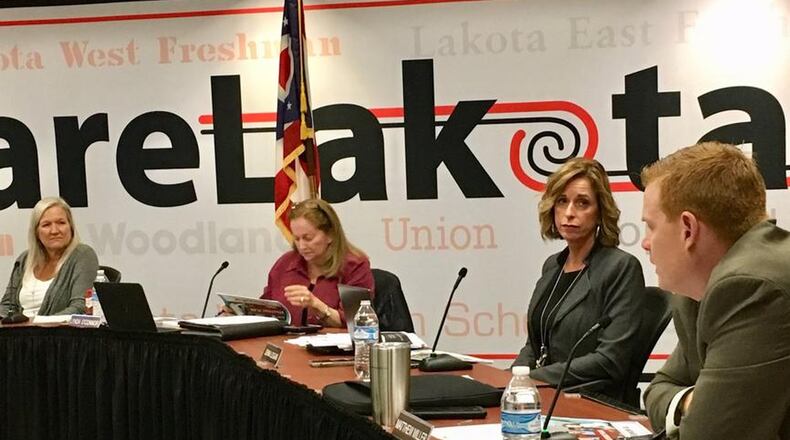“We’re putting these guardrails in place,” said Jenni Logan, treasurer of the 16,500-student district, which is also the eighth-largest school system in Ohio.
“The community should feel reassured that we are putting things in place that structures the way we assess our finances (and) I think it speaks volumes that we’ve gone to these steps,” said Logan.
Such specific financial strategy policies are rare among area school systems. Often school boards come to such plans informally rather through written and voted on policies.
In October school board member Lynda O’Connor registered her concerns – and a dissenting vote – against approving a five-year budget projection that included a $3.7 million shortfall in the fifth year.
At the time and since, O’Connor has said the district needs more precise guidelines to assure Lakota’s financial state remains solvent.
Until winning voter approval of a new operating levy in 2013, Lakota Schools had seen rejections of proposed operating tax hikes and periodically deep budget cuts in personnel and programs since 2005.
But now O’Connor has joined other board members in supporting the three new financial policies but the task of keeping the Butler County school system financially healthy remains, she said.
“The policies are a good place to start, but not the final outcome,” said O’Connor in a statement released by Lakota officials.
“I think putting into policy a philosophical statement that we as a board believe we should follow - practices that lead us to a balanced budget - is an important step in ensuring our financial stability and the health of the district,” she said.
But, O’Connor added, “sustainability remains an issue for me on any long term plan.”
The three new policies are:
• A budget stabilization policy, which sets rules and guidelines for the district to have reserve funds – commonly referred to as a “rainy day fund” - in place within the general operating fund.
• A cash balance reserve policy, sets the balance of the cash reserve funds at a 90-day minimum of operating expenditures. The policy also states that the financial goals of the district should align with Lakota’s strategic plan, introduced in January of this year, and its instructional goals.
• A structurally balanced budget policy, more clearly defines the goals surrounding a balanced budget as it relates to recurring revenues and expenditures.
The three policies came from Lakota’s Finance Committee, which is composed of board members O’Connor and Kelley Casper, district officials and local business leaders.
The collaborative effort began after the school board’s October budget deficit projections.
“We, as a district and with the guidance of our treasurer, have worked hard to get to financial stability,” said Casper. “These new policies are guardrails for us to continue being good stewards of our taxpayers’ dollars while providing the excellent education our students deserve and our community expects.”
“Lakota Schools is financially sound,” said Logan. “We have not only exceeded the levy promises, but continue to be good stewards of our community’s tax dollars.” The levy, which passed in 2013, promised 10 school resource officers, of which the district now has 18.”
“Additionally, seven class periods were brought back to ninth grade students in 2014 and in January of this year, a more robust seventh period option was offered at the high school main campuses.”
And Logan said, “in 2018, daily specials, including a new health and wellness class, were brought back to primary grades and all-day kindergarten was introduced.”
About the Author
